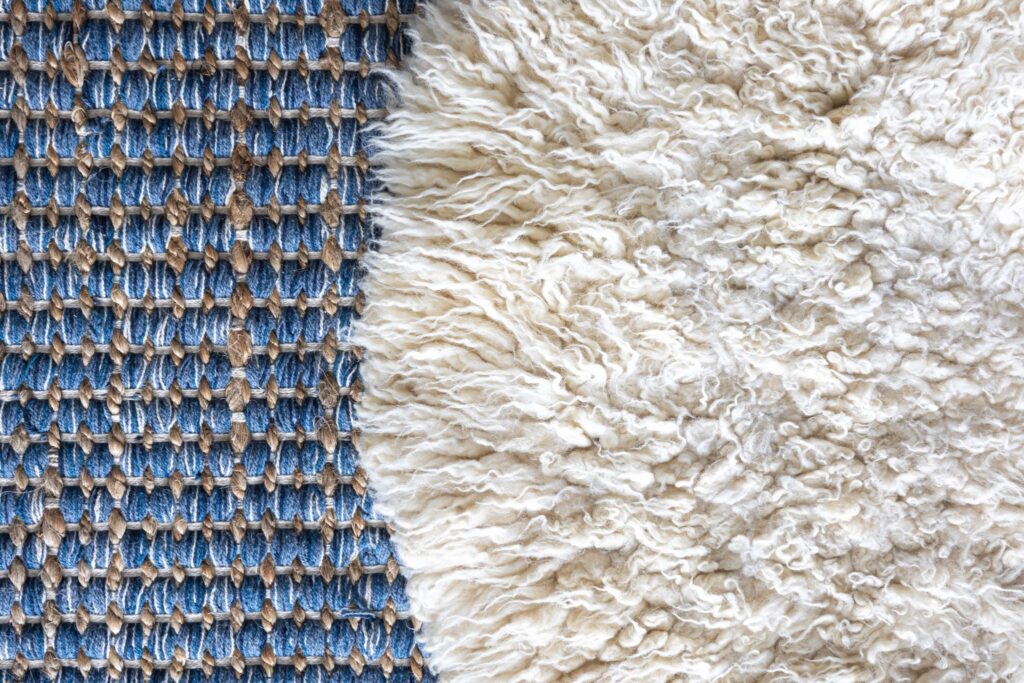One material that is quietly gaining attention across different industries is Wollmatten. The word “Wollmatten” comes from German and means wool mats. These are thick, durable mats made from natural sheep wool, and their uses go far beyond what most people imagine.
Wollmatten were once mostly known in construction and insulation work, but today they are being used in flooring, decoration, soundproofing, gardening, and more. Their popularity is growing because they are natural, long-lasting, breathable, and better for both people and the planet.
In this article, we’ll explain clearly what Wollmatten are, how they are made, and the many practical ways they can be used in everyday life. Whether you’re renovating your home, working on an eco-friendly project, or simply curious about natural materials, this guide will help you understand why wool mats are becoming a trusted choice around the world.
What Is Wollmatten?
Wollmatten are natural wool mats created by pressing and shaping layers of sheep wool into flat sheets. This process can be done mechanically or by using special wool-binding techniques that keep the mat firm and durable without adding harmful chemicals.
Unlike synthetic mats made from plastic or rubber, Wollmatten are fully biodegradable and renewable, since wool is naturally produced by sheep every year. The texture of these mats is soft but strong, making them ideal for use in insulation, flooring, soundproofing, and decoration.
How Wollmatten Are Made
- Wool collection: Wool is carefully sheared from sheep.
- Cleaning: The wool is washed to remove dirt and lanolin.
- Processing: It is then carded (combed) and layered evenly.
- Pressing: The layers are pressed together under controlled conditions.
- Finishing: Some mats are left untreated, while others are treated for moth resistance or moisture protection.
This simple but effective process creates a durable natural mat that can last many years with proper care.
Why People Are Choosing Wollmatten
The use of Wollmatten has grown steadily because they offer practical advantages that many synthetic materials simply can’t match:
- They are made from a renewable natural resource.
- They have excellent insulation properties for both temperature and sound.
- They are breathable, helping regulate indoor humidity naturally.
- They do not release harmful chemicals or strong odors.
- They are biodegradable, making them an eco-friendly choice.
- They are comfortable to walk on and safe for indoor use.
- Their natural colors blend easily with different interior styles.
These qualities make Wollmatten ideal for homes, schools, offices, studios, and even gardens.

Natural Thermal Insulation
One of the most traditional and valuable uses of Wollmatten is thermal insulation. Wool fibers naturally trap air, which reduces heat transfer. This helps keep indoor spaces warmer in winter and cooler in summer.
Wollmatten can be installed in:
- Roofs to prevent heat loss
- Walls to improve insulation and reduce energy bills
- Under floors to keep rooms warm and comfortable
Builders appreciate that wool insulation is safe to handle compared to many synthetic insulation materials, which may release dust or chemicals. It is also breathable, allowing moisture to escape without damaging the structure of the building.
Homeowners who install wool insulation under wooden floors often notice a warmer surface in winter and a reduction in heating costs over time.
Soundproofing and Acoustic Control
Wollmatten are also very effective for acoustic insulation. Because of their fibrous structure, wool mats absorb sound waves instead of reflecting them. This makes spaces quieter and more peaceful.
Ways to use Wollmatten for soundproofing:
- Behind plasterboard walls in bedrooms or living rooms
- Under carpet or laminate flooring to reduce footstep noise
- In home offices, recording studios, or music rooms to cut echoes
Unlike many foam or plastic acoustic products, wool mats are non-toxic, safe to touch, and made from a sustainable resource.
Improving Indoor Air Quality
One unique property of wool is its ability to capture dust and absorb certain airborne particles. It also helps regulate humidity levels in indoor environments. When the air is too humid, wool can absorb moisture. When the air is dry, it slowly releases it back.
This natural process creates a more stable indoor climate. While Wollmatten are not a replacement for air filters, they can support better indoor air quality. For people with chemical sensitivities, wool is often more comfortable than synthetic flooring or insulation materials.
Underlay for Carpets and Floors
Another popular use of Wollmatten is as a floor underlay. Instead of using rubber or foam, many homeowners and builders prefer wool because it is softer, safer, and longer-lasting.
Benefits of using Wollmatten as underlay:
- Creates a soft, warm surface under carpets or wood floors
- Provides additional soundproofing between floors
- Avoids strong chemical smells common in synthetic underlays
- Supports healthy indoor air quality
This makes wool mats especially useful in bedrooms, living rooms, and children’s play areas.

Decorative and Comfort Uses in Homes
Wollmatten are not only for construction or insulation. They are also used for interior decoration and comfort. Their soft texture and natural look make them perfect for adding warmth and style to living spaces.
Common decorative uses include:
- As a rug underlay to make carpets softer and prevent slipping
- As protective pads under furniture to avoid floor damage
- As floor mats in bedrooms and living rooms
- As seat covers or cushions on benches and chairs
Because they come in natural shades like cream, grey, or light brown, they fit well with modern, rustic, or minimalist interior designs.
Garden and Outdoor Projects
Wollmatten are also finding a place in gardening and landscaping. Since they are biodegradable, they can be safely used outdoors and will eventually break down into the soil.
In gardens, they are used for:
- Weed control: Acting as a natural weed barrier without chemicals.
- Moisture control: Helping soil stay damp around plant roots.
- Composting: After use, they can be added to compost piles.
For people who prefer natural gardening methods, wool mats are a great alternative to plastic sheets or synthetic weed barriers.
Caring for Wollmatten
Although Wollmatten are strong and durable, they last longer when properly cared for. Here are some simple steps to maintain them:
- Clean small stains with mild soap and water.
- Allow the mats to air out occasionally to stay fresh.
- Keep them dry to avoid damage, especially outdoors.
- Use moth protection or treated wool if storing them for long periods.
High-quality wool mats can last many years with minimal maintenance.
Things to Consider Before Buying Wollmatten
While Wollmatten offer many advantages, there are a few points to consider before buying:
- Price: Natural wool can be more expensive than synthetic alternatives, but its quality and lifespan often justify the cost.
- Moths: Untreated wool can attract moths, so treated or protected mats are recommended.
- Moisture: Wool can absorb water, so it should not be placed in areas that remain constantly wet without protection.
By choosing the right type of wool mat for the right purpose, most of these issues can be managed easily.
How to Choose the Right Wollmatten
Selecting the right wool mat depends on how you plan to use it. Here’s what to keep in mind:
- Check material purity: Look for 100% natural wool or wool with safe natural binding materials.
- Consider thickness: Thinner mats work best under flooring, while thicker mats are ideal for insulation.
- Look for treatments: If needed, choose mats treated for moth resistance or moisture protection.
- Check product certifications: Trusted suppliers provide details about environmental standards and fire safety ratings.
Environmental Impact of Wollmatten
Wollmatten are popular not only because of their performance but also because of their positive environmental impact. Sheep wool is renewable and does not rely on fossil fuels for production like plastic materials.
When a wool mat reaches the end of its life, it can be composted or safely disposed of without harming the environment. This makes it a sustainable choice for anyone wanting to reduce their ecological footprint.
In addition, many manufacturers today are focusing on ethical wool sourcing and eco-friendly production processes, making Wollmatten even more responsible as a material choice.
Applications Beyond Homes
Although Wollmatten are commonly used in homes, they also have broader applications:
- Commercial buildings: For insulation and soundproofing in offices, restaurants, and shops.
- Educational institutions: Used in classrooms to create a warmer and quieter environment.
- Wellness and yoga studios: As natural floor mats or underlays for soft flooring.
- Temporary structures: In exhibitions or mobile buildings where lightweight, breathable materials are preferred.
Next Read: Basil Fomanka
FAQs
1. What are Wollmatten made of?
They are made from compressed sheep wool. The wool may be untreated or lightly treated for protection against moths and moisture.
2. Are Wollmatten suitable for people with allergies?
Yes, they are often a better choice than synthetic materials. However, some people may have sensitivity to lanolin (the natural oil in wool), so testing a small piece first is a good idea.
3. Can Wollmatten be used under wooden floors?
Yes. They are commonly used as underlays to make floors softer, warmer, and quieter.
4. How long do Wollmatten last?
With proper care, good quality wool mats can last many years. Their durability depends on the environment and usage.
5. Are Wollmatten eco-friendly?
Yes. They are made from renewable wool, contain few or no harmful chemicals, and are fully biodegradable.
6. Do Wollmatten require special maintenance?
Not much. Occasional cleaning and airing are usually enough. If stored for long periods, moth protection may be needed.
7. Can Wollmatten get wet?
They can handle some moisture but should not be kept in constantly wet conditions. Moisture protection is recommended for outdoor use.
8. Are Wollmatten fire safe?
Wool is naturally flame resistant, but it’s always good to check the fire safety rating on the product label.
Final Words
Wollmatten may look simple, but they offer big benefits. From insulating walls, roofs, and floors to decorating homes and protecting gardens, these natural wool mats have countless everyday applications.
Their ability to regulate temperature, absorb sound, and support healthy indoor air makes them an excellent choice for anyone who values comfort, quality, and sustainability. Unlike many synthetic materials, Wollmatten are made from renewable resources and can return safely to the earth at the end of their life.
As more people turn toward natural building materials and eco-friendly solutions, Wollmatten are becoming a smart option not just for homes, but also for offices, schools, and wellness spaces. They represent a perfect balance between tradition and modern use, offering both practicality and environmental responsibility.
Keep exploring with BusinessMusk for trusted information you can use every day.

